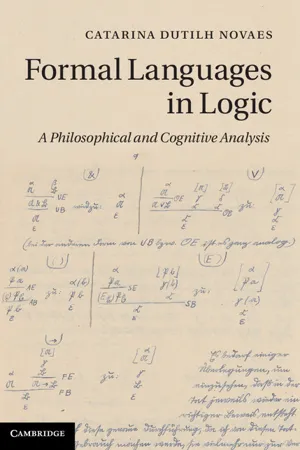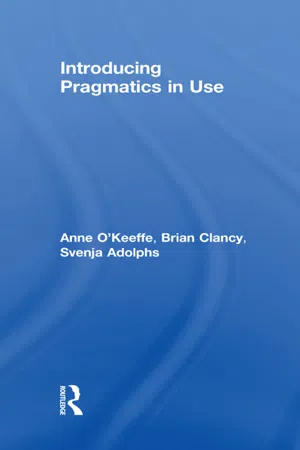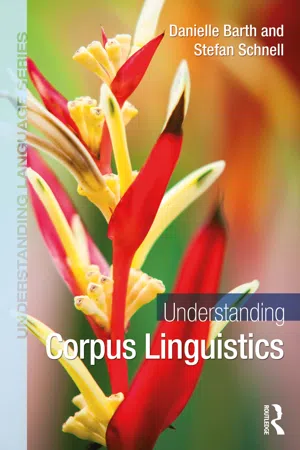Languages & Linguistics
Levels of Formality
Levels of formality refer to the different degrees of politeness and professionalism in language use. In communication, formal language is characterized by adherence to grammar rules, use of complex vocabulary, and avoidance of slang, while informal language is more relaxed and conversational. Different situations and relationships may call for varying levels of formality in language.
Written by Perlego with AI-assistance
Related key terms
1 of 5
3 Key excerpts on "Levels of Formality"
- eBook - PDF
Formal Languages in Logic
A Philosophical and Cognitive Analysis
- Catarina Dutilh Novaes(Author)
- 2012(Publication Date)
- Cambridge University Press(Publisher)
Do formal languages qualify as languages on the basis of these features? Again, it will all depend on whether one is prepared to stretch the concept of ‘language’ beyond its familiar borders. This is not a particularly interesting question, though, and defending the point that formal languages should be considered as fully fledged languages is not part of the agenda here. Instead, what is important is to bear in mind these basic properties of formal languages as they emerge from the systematic comparison with more ‘familiar’ kinds of languages (human spoken languages in particular). 2.2.2 Formal languages as formal While nothing essential seems to hinge on formal languages being con- sidered as languages or not (it is mainly a matter of terminology, a verbal dispute), the same does not hold of the attribution of a ‘formal’ character to these languages. It is crucial that we understand in which sense(s) formal languages are formal, and what exactly this tells us about logic and its ‘formality’. Let me start by noting that a compelling case can be made for the idea that to be formal in general is essentially a matter of degrees; this can be The very idea of a formal language 57 argued for from a variety of perspectives. For example, if the concept of the formal is associated with processes of abstraction (both the processes them- selves and their products), i.e., of separation of matter from form, then presumably such processes can be carried out to different degrees of com- pletion. Generally, many of the different variations of the formal I have discussed in Dutilh Novaes 2011b allow for degrees of being formal, in such a way that the formal v. non-formal divide would not be a sharp, clear-cut demarcation. Yet, it seems that the concept of a formal language is not compatible with the idea of a distinction of degrees. - eBook - ePub
- Anne O'Keeffe, Brian Clancy, Svenja Adolphs(Authors)
- 2011(Publication Date)
- Routledge(Publisher)
CHAPTER 4
4. Politeness in Context
4.1 THE LINGUISTIC STUDY OF POLITENESS
In this chapter we set out to explore some of the most influential theories of politeness that are essential reading for those new to the area. However, before doing so, it is worth taking time out to examine your own intuitions about politeness. In her book Pragmatics and Discourse (2008), Cutting warns that in pragmatics, when we talk of politeness, ‘we do not refer to the social rules of behaviour, such as letting people go first through a door … We refer to the choices that are made in language use, the linguistic expressions that give people space and show a friendly attitude to them’ (pp. 44–5). Therefore, in your reflection on what you consider polite language to be, do you consider terms like sir or madam , which show respect towards a person, polite? Is using fixed expressions like please, thank you, excuse me or sorry polite, socially acceptable behaviour? Or is language which we use to avoid sounding too direct such as Would you mind awfully if I asked you to move? an example of language which you consider to be ‘distancing’ or ‘hypocritical’?Politeness is one of the most researched branches of contemporary pragmatics – Dufon et al. ’s (1994) bibliography of politeness research extends to 51 pages in small print and claims not to be exhaustive. Watts (2003) noted that his bibliography contained 1,200 titles and was growing weekly!The question of what constitutes polite and, indeed, impolite, language usage is one of the most researched topics in contemporary linguistics. This chapter examines two distinct seminal theories (or models) of politeness, and demonstrates key features of these models in context. The first, Brown and Levinson’s Politeness: Some Universals in Language Use (1978, reprinted 1987), is arguably the most influential model to date given that it has dominated the theory of linguistic politeness since it was first published. Brown and Levinson define politeness as a complex system for softening face-threatening behaviour. They view politeness as a phenomenon that can be codified, thereby enabling the linguist to measure politeness quantitatively. This can be done very effectively using corpus software. However, researchers such as Watts (1989; 2003) have shown that cultures have conflicting views as to what constitutes polite language use, particularly when it comes to impoliteness. His model, as outlined in his book Politeness , has emerged as perhaps the most prominent alternative for the examination of linguistic politeness. He argues that there is no linguistic structure that can be considered innately polite; rather, politeness arises from a negotiation between individual speakers and the context in which the interaction takes place. In addition to these theories of politeness, we will examine some of the growing literature on impoliteness, for example Culpeper (1996) and Bousfield (2008). Many theorists, such as Watts, now use the term (im)politeness - eBook - ePub
- Danielle Barth, Stefan Schnell(Authors)
- 2021(Publication Date)
- Routledge(Publisher)
4 Levels of linguistic representation in corpus-linguistic researchDOI: 10.4324/9780429269035-4KEYWORDS Variables and Variants Corpus-Linguistic Analyses of Contextual Factors Behavioural Profile (Lexical Semantics) Configurational Approach (Lexical Semantics) Productivity (Morphology) Corpus Phonetics and Phonology Constructional Alternations (Syntax) Corpus-based Discourse Analysis and Conversation Analysis Examples of Well-known Corpora and Their Uses4.1 Linguistic structures and their variants
4.1.1 Language use and contextualisation
Language use at all levels of representation is tremendously affected by a range of contextual features. As discussed in 2.2.4 , corpora have external and internal features or contexts. Characteristics of the external (or situational) context are important for understanding variation. Language use can be conditioned by who is interacting to whom and when, how much interlocutors know about each other and what they are discussing, whether the language use is spontaneous speaking or signing or writing and what the genre, register and style of speaking, signing or writing are. Take for example written text found in a textbook and spoken conversational language use. We would expect to see different vocabulary choices, different average lengths of sentences, different kinds of structures and so on. Many conversations are full of spontaneous, unplanned language use, whereas the language in a textbook is produced more slowly, usually has gone through multiple drafts and is more carefully created. A conversation includes many situational clues to interpreting language such as eye gaze, gesture, facial expressions, tone of voice for spoken language, as well as means to establish common ground between conversational partners, all of which written text lacks, which should affect language choices. Academic writing also tends to be more formal than spontaneously produced spoken language (cf. 3.1.6 ). English spoken language is often full of contractions such as can’t for cannot, gonna for going to or even imma for I’m going to and these forms are barely noticed, tho in academic writing they’d stand out.1
Index pages curate the most relevant extracts from our library of academic textbooks. They’ve been created using an in-house natural language model (NLM), each adding context and meaning to key research topics.


